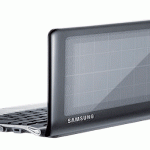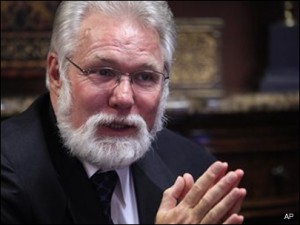 By Hilda L. Solis: IT IS time to dispel a myth. To paraphrase Mark Twain, the rumors of manufacturing’s demise are greatly exaggerated. In fact, manufacturing in America is not only alive, it’s thriving. America’s manufacturing industry is expected to grow by 6.2 percent this year, outpacing the overall economy. Last year, the auto industry’s Detroit Three of Chrysler, GM, and Ford gained U.S. market share for the first time since 1995. And this July, motor vehicle and parts manufacturing jumped by 5.2 percent over the year-ago month, a direct contributor to the increase in factory outputs of 0.6 percent that month.
By Hilda L. Solis: IT IS time to dispel a myth. To paraphrase Mark Twain, the rumors of manufacturing’s demise are greatly exaggerated. In fact, manufacturing in America is not only alive, it’s thriving. America’s manufacturing industry is expected to grow by 6.2 percent this year, outpacing the overall economy. Last year, the auto industry’s Detroit Three of Chrysler, GM, and Ford gained U.S. market share for the first time since 1995. And this July, motor vehicle and parts manufacturing jumped by 5.2 percent over the year-ago month, a direct contributor to the increase in factory outputs of 0.6 percent that month.
Better yet, this industrial growth has spurred job growth. In July alone, manufacturers created 24,000 jobs. Since December, 2009, the manufacturing sector has created more than 289,000 jobs — more than 1 in 10 of all jobs created during our recovery. GM announced this summer that it is creating 4,000 jobs at 17 facilities, including at least 250 at its Powertrain plant in Toledo. It is investing $204 million there.
Solar at Work
In all sorts of industries, manufacturers are making investments that hold great promise for American workers and our economy. Pittsburgh Glass Works LLC is spending more than $85 million to set up a manufacturing hub that will retrofit a vacant 416,000-square-foot plant into a center that will create more than 260 jobs. Then, there’s the ripple effect. For every job created in the manufacturing sector, four to seven jobs are created in the broader economy. The auto industry supply chain now employs three times as many workers as auto companies themselves. This supply chain accounted for almost 3.5 million workers last year. This growth contributes to gains in other industries, from retail to hospitality to tourism. That’s good news for every small business near the Powertrain facility — from Craig’s Flowers & Gifts to The Original Gino’s Pizza on West Alexis Road… America working its way back
















